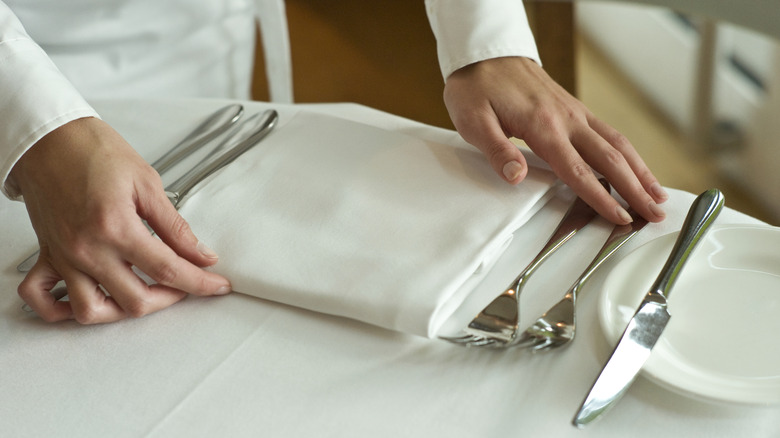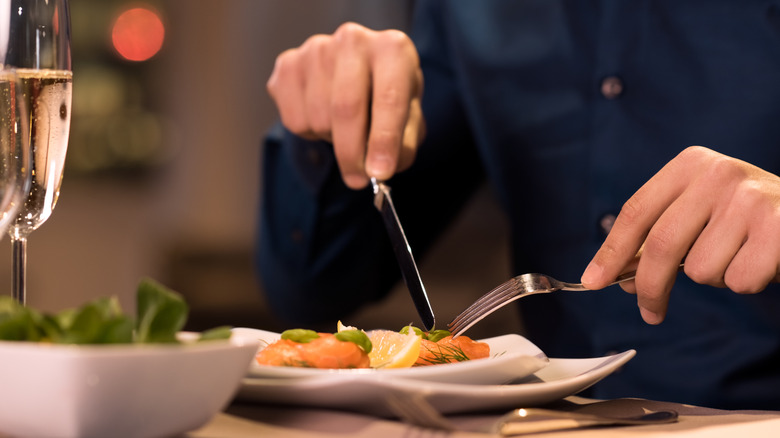Never Break One Utensil Rule When Dining At A Restaurant
The iconic 1990 film "Pretty Woman" features a scene where Vivian (played by Julia Roberts) goes to a fancy restaurant and is unsure which utensil to use for her appetizer or how to eat escargot. With so many rules for dining etiquette, it can be challenging to remember them all. But one rule you should never forget? Don't talk with your utensils in your hands.
It's an easy principle to break. Picture this: You're in the middle of eating scrumptious pasta or slicing into a perfectly cooked filet, and your friend across the table asks how your job is going. You start venting about your boss, and realize you've been death-gripping your fork and knife during the conversation. No worries about talking with your hands — a 2024 study by Science of People found that the most popular TED Talks featured speakers using 465 hand gestures (gesturing can also help get your point across and increase the perceived value of what you're saying). But do not combine hand gestures with utensils, as that's frowned upon in the dining etiquette world. Feel free to gossip and voice your grievances — just put your cutlery down before you do (and avoid clasping any silverware in a tight fist).
Other dining etiquette tips
Some of the most important dining etiquette tips include starting with the smallest fork or utensil and working your way inward toward your plate, not placing your elbows on the table, and chewing with your mouth closed. You should also put your phone away at the dinner table, keep your napkin on your lap during the meal (and only use it for light dabbing on your face), and always keep the salt and pepper shakers together. However, there are some other, slightly more obscure rules you should also know.
If you're vegan, vegetarian, or gluten-free, you might need to make special requests when ordering at a restaurant, which is perfectly acceptable. But excessive meal modifications can be bad etiquette. Continuously sending food back or asking dozens of questions monopolizes your server's time, throws off the staff's pace, and takes attention away from other tables. To avoid this chaos, research the restaurant beforehand to ensure it suits your preferences.
Some rules, however, have become outdated, such as the now-defunct etiquette for passing dishes. Previously, when serving family-style meals at home or in a restaurant, food was passed to the right, or counterclockwise. While a cohesive serving process without traffic jams still makes sense, this rule isn't strictly followed anymore. If you feel like passing a dish to the left, rest assured — the etiquette police won't come after you.


